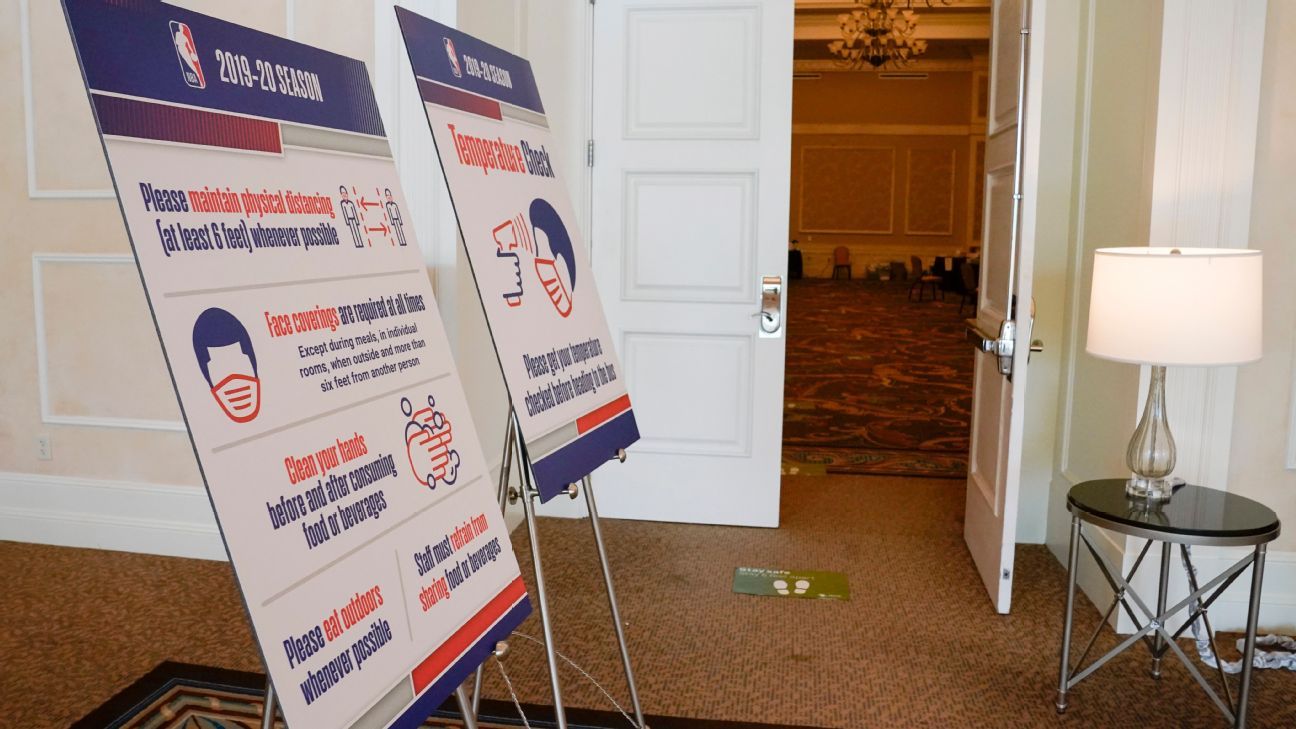Later, it was discovered that five of the 789 professional athletes infected with COVID-19 suffered from inflammatory heart disease in the largest study to date on the cardiac impact of the virus on sports.
In data published Thursday in JAMA Cardiology, doctors affiliated with six leagues based in the United States followed the 789 players infected last year between May and October.
Before returning to play, the athletes underwent three non-invasive tests that monitored the heart rhythm, did an ultrasound of the heart and measured a protein in the blood that could be a sign of cardiac damage. Thirty athletes had abnormal test results and were referred for cardiac magnetic resonance imaging. The doctors diagnosed five cases of inflammatory heart disease (0.6% of the total), three of which were identified as myocarditis and two as pericarditis.
Dr. David Engel, a cardiologist at Columbia University Irving Medical Center and a leading author of the article, said the results are in line with current assessments that COVID-19 cardiac injury correlates with symptom severity . The study incorporated infected athletes who were symptomatic and those who were asymptomatic. All five cases of heart disease included symptoms that “exceeded the empirical definitions of mild COVID-19 disease,” according to the article.
Doctors are still waiting for even bigger data sets to be compiled by the Big Ten Athletic Conference and the NCAA. Each university published data from its own evaluations with mixed results. A Ohio State University study made headlines in the fall, when researchers found that four out of 26 athletes – or 15% – had signs of myocarditis after COVID-19. A later study by the University of Wisconsin found only two cases of 145 athletes.
Myocarditis is a rare but well-known effect of viral infections, including those that cause the common cold, H1N1 influenza or mononucleosis. If not diagnosed and treated, it can cause heart damage and sudden cardiac arrest, which can be fatal.
Concern about him and other heart diseases fueled early debates about playing sports during the pandemic, especially last summer, when it comes to college football. Engel attributed some of these concerns to the confusion over how to interpret studies that used cardiac magnetic resonances to identify diseases.
The professional sports leagues that contributed data to the JAMA Cardiology article – NBA, WNBA, NFL, NHL, Major League Baseball and Major League Soccer – followed a standardized screening procedure recommended by the American College of Cardiology. It included blood tests, an electrocardiogram and a resting echocardiogram or ultrasound of the heart. Other tests and, eventually, the diagnosis, were based on the abnormalities of the initial screening.
“There was a lot of controversy about how to interpret these cardiac MRI studies and what the findings really meant,” said Engel. “This study had a clinically relevant approach. Patients with a positive test went through the recommended screening of the American College of Cardiology. Only after abnormalities did we proceed with the tests. Using this approach step by step, we discovered what we consider to be clinically incidents of myocarditis and pericarditis is quite low. “
Ten of the doctors involved in the study – 16 authors are listed – revealed to have received financial compensation or to be hired by any of the leagues or associations involved. Engel is the NBA’s consulting cardiologist.
The five players diagnosed with heart problems, who were not identified for the purposes of the study, were all subjected to three to six months of withdrawal from their sports and will continue to be tested to determine the long-term effects of the disease on their physical illness. Moving forward, the American College of Cardiology recommended eliminating screening for athletes who had asymptomatic or mild cases, maintaining the same screening process for those with moderate or severe symptoms.
“What was comforting is that all the athletes who went through the screening, the 784 out of 789, were able to play safely again,” said Engel. “That was unknown. At the beginning of the pandemic, when these responses were not known … we were able to demonstrate that, by going through a rigorous and systematic screening approach, we were able to achieve a safe return to the game.”
In a joint statement, the six leagues said in part: “As well as other lessons that professional sports have learned about COVID-19, the results of this study are being widely shared to continue to contribute to the growing body of knowledge about the virus – a commitment that we share collectively with each other and with our players for the benefit of society beyond sports. “
The study results appear to be good news for athletes who have had COVID-19, said co-author Dr. Jonathan Kim, a sports cardiologist at Emory University in Atlanta who also works as a cardiologist on the Atlanta Falcons team.
“All four major sports are done in 2020, all of them have finally returned to a season – including the athletes that were included in this record – and some sports like the NBA are now transported to a new season,” Kim told Kaiser Health News . “These athletes are obviously still playing and are doing well.”
The study did not shed light on what could happen in the long run with players who were diagnosed with heart inflammation. They will continue to be monitored with MRI scans to see if the effects disappear over time.
“Only time will tell if, in five years, we will have an epidemic of heart problems,” said Dr. Robert Bonow, a cardiologist at Northwestern University and editor of JAMA Cardiology who was not affiliated with the study. “But I think this is unlikely.”
The results of the two other future studies on the possible COVID-cardiac link are expected to be published soon, depending on the peer review.
ESPN’s Paula Lavigne and Mark Schlabach and Kaiser Health News reporter Markian Hawryluk contributed to this report.
